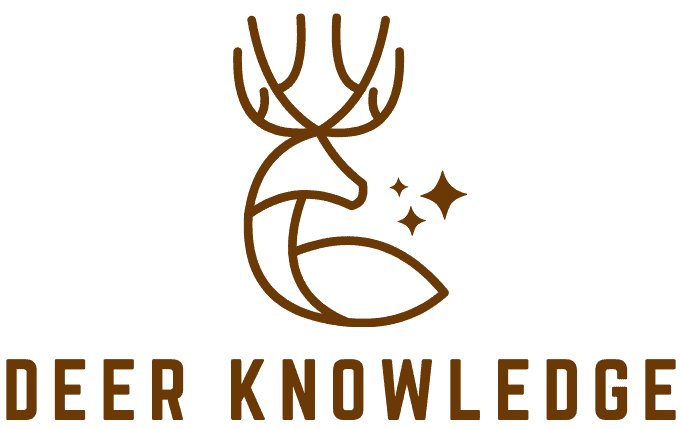Have you ever wondered if animals, specifically deer, experience emotions such as grief and mourning when faced with the death of their fellow herd members?
When it comes to deer, their social structure plays a vital role in forming tight bonds, especially between mother deer (does) and their fawns. As a highly social animal, you could be forgiven for thinking they might well have the emotional capability to mourn and grieve.
So if you’ve ever wondered if deer mourn their dead, this examination will present you with the evidence so you can make up your own mind as to whether these creatures feel loss in the way we do as humans.
Do Deer Mourn Their Dead?
Deer Grief: Fact or Fiction
You might be wondering if deer experience grief similar to humans. While there isn’t enough research to say for sure, some observations suggest that deer might feel a sense of loss when a member of their herd dies.
For example, deer have been seen nuzzling and licking the bodies of deceased herd members, as well as standing over the bodies for extended periods, seemingly mourning them.
The animal world is full of fascinating behaviors, and mourning has been observed in several species, including elephants, dolphins, and primates, indicating that experiencing grief may not be exclusive to humans.
Female Deer and Their Emotional Response
Female deer, also known as does, have been known to display emotional responses to their environment. If you’ve seen Bambi, then you might recall the tragic scene where Bambi’s mother dies, and Bambi has to cope with the loss. While this might be a dramatized example, real-life observations show female deer interacting with their young, protecting them from danger, and nurturing them.
Considering this strong bond, it’s reasonable to assume that female deer, in particular, could exhibit an emotional response when something happens to their offspring. While there’s definitely a need for more research to establish a concrete link between deer and the complex emotions tied to mourning, the evidence we do have leads us to believe that there is more than a possibility of deer grief.
Understanding Animal Grief
Recognizing Emotional Distress
It’s essential to acknowledge that animals, including elephants, dolphins, orca whales, primates like chimpanzees and bonobos, domesticated pets like dogs and cats, and even birds such as crows, magpies, and ducks, can experience emotions similar to humans.
Scientists and biologists are continuously learning more about the emotional lives of these creatures and their ability to feel grief. When animals experience grief, they often display emotional distress through changes in behavior, such as withdrawal and loss of appetite.
Vocalizations as Expressions of Grief
Vocalizations are a common way for animals to express their emotions, including grief. In the case of deer, observers have noted mournful calls when interacting with deceased herd members.
Similarly, animals like dolphins, whales, and even cats emit unique sounds or cries when experiencing sadness or loss. Paying attention to these vocalizations helps to identify the emotional state of animals, allowing for a deeper understanding of their emotional response to death.
Anthropomorphizing Animal Emotions
One of the challenges in understanding animal grief is the tendency to anthropomorphize their emotions.
While it’s important to respect the fact that animals have their unique ways of experiencing and expressing emotions, it’s also crucial not to project human traits onto them. Bioethics plays a significant role in that respect, ensuring that the study and interpretation of animal emotions are grounded in scientific evidence.
Grieving Rituals in the Animal Kingdom
Vigils and Funerals: Not Just For Humans
You might be surprised to learn that grieving rituals are not exclusive to humans. Many land and sea mammals have been observed participating in these types of behaviors. For example, both chimps and orcas have been known to hold vigils for their fallen companions, offering proof that grieving extends beyond our own species.
Chimps have been documented holding something that can be compared to funerals, where they gather around the deceased individual and console each other. Similarly, orcas are known to carry their deceased calves on their heads, seemingly in order to provide comfort and pay their respects. The story of Tahlequah, the orca who carried her dead calf for 17 days, demonstrates the depth of emotions present in these animals.
Complex Social Bonds and Loss
Mammals often form complex social bonds, which may explain why they feel and express grief when they lose a member of their group. These relationships are essential for survival, as they provide support and protection. The emotional aftermath of losing a fellow group member can be seen as evidence of the strength of these bonds.
As we’ve explored, deer have exhibited behaviors that suggest a sense of loss following the death of a member of their herd. For example, some observers have noted deer staying near the body of a deceased companion, nuzzling and licking, and even vocalizing mournful calls.
These observations on their aren’t really enough to give a definitive answer either way, but the anecdoctal evidence seems to suggest these creatures do feel a sense of loss.
Final Thoughts on the Potential for Deer to Mourn
To sum up, while definitive scientific evidence is still lacking, the behaviors observed in deer and other animals suggest a capacity for grief and mourning. The strong bonds formed within deer herds, particularly between does and their fawns, hint at a deeper emotional complexity.
Whether deer mourn their dead in the same way humans do remains a subject for further research, but the possibility opens up a fascinating window into the emotional capabilties of these creatures.

